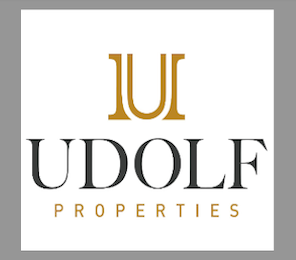Spotlight on… Leah Caroline
By Cindy Mindell
WILTON – Leah Caroline is in search of tekhelet, the ancient blue dye mentioned 48 times in the Hebrew Bible and used in the Temple to color the garments of the High Priest and the tapestries adorning the walls.
The New Haven resident has long used cyanotype, an early photographic process that uses sunlight to produce a blue print. She is artist-in-residence at the Weir Farm Art Center in Wilton, where she has spent the month creating cyanotype scrolls related to nature writing and Biblical texts and incorporating them into installations of wunderkammern, or cabinets of curiosities.
Caroline will exhibit and discuss her latest work at the Wilton Library on Monday, July 21.
A native of Brooklyn, N.Y., Caroline grew up in the Chassidic community of Crown Heights. She earned a teaching certificate from Beit Chana seminary in Tzfat, Israel in 1996 and is a graduate of the Associated Beth Rivkah Schools Division of Higher Learning in Brooklyn.
She has lived in New Haven since 2001 with her husband and their four children. When their youngest child started school, Caroline enrolled in the Lyme Academy College of Fine Arts (LACFA) in Old Lyme, where her artwork was included in every Annual Juried Student Exhibition during her tenure and won a merit award.
In addition to cyanotype, Caroline also creates works from photography and digital media, which she incorporates into installations. Her artwork has been included in several regional exhibitions, as well as solo exhibitions at the Yale School of Management and the Joseph Slifka Center for Jewish Life at Yale, as well as the Hadas Gallery in Brooklyn. She is a member of the board and design committee of the Lubavitch Mikvah in New Haven and has written and illustrated for the Chabad.org website.
Her work largely focuses on themes drawn from nature.
“When I begin to create work, the subject matter is often not specifically Jewish,” she says of her process. “It is about nature, gardens, life cycles, pregnancy, etc. Yet, as a Jewish woman, my Judaism often infiltrates my work in the process, and creates visual and conceptual layers. My recent work, ‘I have come to my garden,’ is about nature and pregnancy – but also about Song of Songs and Chassidic commentary on [that book of the Hebrew Bible]. These are texts I studied growing up in Chassidic Brooklyn – texts about nature, gardens, and our place on Earth. Making my work encouraged me to go back to these sources. I also use scrolls as a format, which are reminiscent of the Torah scrolls and megillahs.”
In 2012, Caroline was part of a talk-back panel after a performance of My Name Is Asher Lev at the Long Wharf Theatre in New Haven. The play explores the conflict between religion and art in a Chasidic family in 1950s-era Brooklyn.
Caroline says she was able to draw on her similar background – and even lived in the same community as the fictitious Lev family – when fielding audience questions about the play. Her own experience as an artist in a traditional Jewish family, however, was different than that of the central character.
“When I read My Name is Asher Lev as a teenager, I remember feeling how familiar – yet strange – it was,” she says. “There was enough accuracy with the place and characters, yet the atmosphere was not what I personally experienced. To be fair, the book is set in the ‘50s and I read it in the ‘90s. Growing up, I really didn’t feel that conflict [between religious tradition and personal expression]. I was encouraged by my parents and teachers to create artwork, and my mother often brought me to the Brooklyn Museum of Art.”
As an adult art student, she was able to easily navigate any conflict with halacha that arose, in classes like figurative sculpture.
“More recently, I have had to put more thought into the sacredness of the text I use, and how I use it,” she says. “But I don’t see that as a conflict. If anything, it helps my artistic practice to think about these things. To try to understand why I make what I do and how I should make it. That being said, I do think there is some tension in creating artwork – any artwork, religious or not. Art is simultaneously private and public, which can be seen as tension between personal expression and tradition. But tension is a good thing; it enriches a work.”
In addition to leading art workshops in various venues, Caroline founded the Artists’ Beit Midrash in New Haven this year, where she also teaches, along with Rabbi Yossi Yaffe of Chabad of the Shoreline.
“The Jewish art community in the New York City area is really blossoming and I wanted to bring some of that to Connecticut,” she says. “Some of my reasons were a little bit selfish: In my experience, my art and Judaism strongly influence each other. I wanted to create and be a part of a similar community where I could have conversations about artwork and Judaism. I also see the Artists’ Beit Midrash as a way for people to connect with their Judaism in a way that they wouldn’t otherwise.”
Caroline and Yaffe plan to run workshops in the fall and hope to bring the Beit Midrash to other communities in Connecticut.
For her work as an artist-in-residence at Weir Farm Art Center, Caroline had hoped to explore the similarities between the ancient tekhelet. The pigment shares some similarities with the cyanotype she regularly uses in her work: the dye from the gland of the murex trunculus snail, the probable source of the dye, turns from purple to blue in sunlight, and cyanotype turns blue when exposed to sunlight.
While she has found it difficult to procure the fresh snails, Caroline is also experimenting with indigo, mentioned in the Talmud as the “counterfeit” tekhelet.
“I am endlessly inspired by the nature at Weir Farm, and I’ve been collecting and documenting plants and other natural materials,” she says. “I am scanning, photographing, and creating cyanotypes. J. Alden Weir, the artist and founder of the farm, said, ‘Really, I know not what I am best at. I believe I am a fisherman, dreamer and lover of nature… If I lived to 102 I might become an artist.’ That probably sums up my experience here.”
Leah Caroline will present and discuss her Weir Farm artwork on Monday, July 21 from 6 to 7:30 p.m. at the Wilton Library, 137 Old Ridgefield Road, Wilton. For information: (203) 762-3950, wiltonlibrary.org.
Comments? email cindym@jewishledger.com.








 Southern New England Jewish Ledger
Southern New England Jewish Ledger












